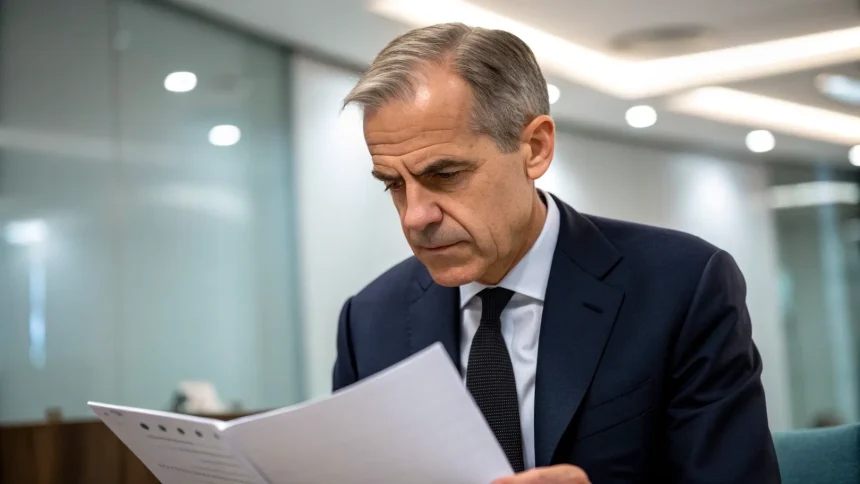As Ottawa weighs its next moves on energy and constitutional rights, one question looms over federal politics: how will Mark Carney handle two volatile files that could define a leadership run and a national agenda?
The core challenges are clear. The government must navigate oil and gas policy in a resource-heavy economy while responding to rising use of the Charter’s notwithstanding clause by provinces. The stakes are economic, legal, and political, and they will shape federal-provincial relations in the months ahead.
“Ottawa must tread lightly on two issues: oil and gas and the notwithstanding clause. Is Carney wise or strong enough to back off?”
Background: Energy Policy Meets Economic Reality
Canada’s oil and gas sector remains a key source of jobs, exports, and government revenue, especially in Alberta, Saskatchewan, and Newfoundland and Labrador. Federal data show the sector accounts for a significant share of national output and a large portion of exports.
At the same time, the sector is a major driver of greenhouse gas emissions. Oil and gas production accounts for about a quarter to a third of Canada’s emissions, according to national inventories. That tension drives policy fights over carbon pricing, methane rules, clean power targets, and a proposed cap on oil and gas emissions.
The Trans Mountain pipeline expansion is entering service, opening new capacity to the Pacific coast, while global oil markets face uncertainty from war, OPEC+ decisions, and energy transition policies. For Ottawa, any shift on climate rules could ripple through provincial budgets and investment plans.
The Notwithstanding Clause Flashpoint
Section 33 of the Charter allows legislatures to temporarily override certain rights. Provinces have used or signaled it on issues from language laws to labor disputes and secularism rules. Quebec attached it to Bills 21 and 96. Ontario threatened it in a 2022 education standoff and passed it in 2021 for municipal election law changes.
The federal government has criticized preemptive use, arguing it weakens rights protections. Ottawa can, in theory, invoke the clause itself, though it has not done so. Any federal move to curtail provincial use would spark a legal and political fight over constitutional balance.
Legal scholars warn that frequent use normalizes rights overrides. Premiers counter that provincial legislatures should set policy when courts block measures with wide support. The debate is now a live test of how far Ottawa should go in defending Charter rights without inflaming regional tensions.
Carney’s Calculus: Policy, Politics, and Markets
Carney, the former Bank of Canada and Bank of England governor, is seen as a possible Liberal leader. His record on climate finance and transition planning appeals to urban voters and international investors. But oil-producing regions view federal climate rules as costly and intrusive.
If Carney pushes hard on an emissions cap or stricter timelines, he could win credibility with climate-focused voters and business leaders seeking clarity. He also risks deepening regional anger and inviting court challenges. If he softens targets or pace, he might widen his coalition but face backlash from environmental groups and some caucus members.
On the notwithstanding clause, a forceful federal stance could rally rights advocates and legal experts. It could also provoke provinces and pull courts into a prolonged clash. A lower-key approach—pressing cases issue by issue and avoiding sweeping new laws—may reduce conflict but look timid to those seeking a firm defense of rights.
Industry, Labor, and Regional Views
- Energy companies want clear timelines, credit for carbon capture, and faster permitting.
- Workers seek stable jobs and credible transition plans for skills and pay.
- Provinces seek fiscal certainty and respect for jurisdiction over resources.
- Rights groups urge restraint on the notwithstanding clause and prefer case-by-case review.
These interests collide in courtrooms, budget tables, and community meetings. Any federal leader will need to show empathy for regional economies while holding a steady national standard.
What To Watch
Several decisions are approaching. Ottawa must finalize details of the oil and gas emissions cap and methane rules. Provincial court cases on Bill 21 and other measures tied to the clause are moving through appeals. Business investment plans for carbon capture and clean fuels hinge on long-term policy certainty.
Recent polling suggests Canadians are split on how fast to cut emissions and on the use of the clause. Support varies sharply by region and age. That split will shape how much room a leader has to compromise or to hold the line.
Ottawa’s next steps will signal whether the emphasis is on steady pragmatism or on sharper lines. For Carney, the tests are linked: credibility with markets and allies depends on clear climate policy, and national cohesion depends on a careful approach to constitutional fights.
The path forward may be narrow but workable. Calibrate climate rules with firm targets and flexible tools. Engage provinces on revenue and jobs. Confront rights overrides case by case, backed by strong legal arguments rather than sweeping threats. Watch for movement on these fronts. The choices made now will shape Canada’s economy and rights protections for years to come.







